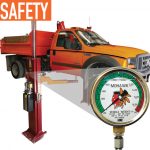Part one of this article discussed forward crash avoidance systems and some issues that may arise by utilizing such a system independent of other safety features available. In part two, Kinniry discusses solutions to build a best-in-class fleet safety program by using multiple safety platforms to complement one another.
ONLINE SYSTEM BENEFITS
They key benefit of online fleet driver safety and risk management application is that they are designed to change behavior so drivers don’t make the mistakes that cause accidents in the first place. This means that every kind of accident in all situations can be prevented or remediated—not just the kinds a specific onboard system has designed for optimal performance.
At the core of these systems are digital files that store a record of negative driving events collected in near-real time and convert that record into a comparative risk score. Events typically include traffic violation convictions from collected Motor Vehicle Reports, accidents, and fleet safety policy violations, and can also include traffic camera citations and complaints from public driver reporting systems (like “1-800-How’s My Driving”).

Whenever a driver ascends to a higher risk level, the systems immediately notify the driver and all pre-determined management personnel of the change and assign online, remedial online, or behind-the-wheel training. Depending on the seriousness of the event, the systems enable management to deliver other sanctions, from restricted driving privileges all the way to termination.
The impact of this kind of driver monitoring and timely response is that fleet drivers soon learn that they no longer fly under the safety radar and that it’s impossible to escape consequences for bad driving behavior. As a result, drivers—all of whom have long been aware of how to drive safely—correct their behavior.
NO DENYING THE METHODS
The abovementioned method of employee behavior change is known in management circles as “the Hawthorne Effect.” It was first observed in the late 1920’s by Edward Deming, a pioneer in industrial psychology. Deming was asked by Western Electric to run an experiment in its Hawthorne, Illinois, manufacturing plant to determine the best lighting systems to enhance worker productivity.
What he found was that every different lighting system generated the same improvement. He concluded that when employees know that management is serious about achieving a result and that their performance is conspicuously and carefully measured, employees tend to achieve the result.
CEI has documented that its own system, DriverCare Risk Manager, has prevented thousands of fleet accidents, saving lives and millions of dollars in both the direct and “hidden” costs of fleet accidents, including lost productivity, insurance premiums, and administrative overhead. In some cases, CEI has helped achieve sustained reductions in fleet accident rates of as much as 35 percent.
But there’s another benefit online accident prevention systems convey, although it’s difficult to quantify: reduced liability and legal expenses. Unlike onboard crash prevention systems, applications like DriverCare identify at-risk drivers, often before their next accident. It also intervenes with them and retains a record of every intervention—information that can be critical in avoiding culpability for negligent entrustment.
BUILD A BEST-IN-CLASS FLEET SAFETY PROGRAM
CEI welcomes the advent of onboard technology that can help prevent accidents and save lives. Fleets should not expect technology alone to create an optimal safety program. In CEI’s opinion, online and onboard systems are mutually compatible and both necessary for a fleet to embrace safety best practices.

Brian Kinniry, senior director of strategic services, The CEI Group, Inc.
ABOUT THE AUTHOR:
Mr. Kinniry is senior director of strategic services at The CEI Group, Inc.,
a fleet driver management company that provides technology-enhanced accident prevention and accident management to automotive fleets. For more information,
visit ceinetwork.com.
_______________________________________________________________________
MODERN WORKTRUCK SOLUTIONS: MARCH 2016 ISSUE
Did you enjoy this article?
Subscribe to the FREE Digital Edition of Modern WorkTruck Solutions magazine.
![]()




